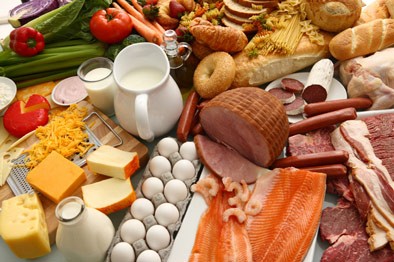LENScience
Chemicals in my food
Teacher Professional Development presented by LENScience in conjunction with the Department of Chemistry, University of Canterbury
The last 100 years has seen the development of a vast array of new chemicals that have changed the world around us – the paints for our cars, the plastics to pack our food in, the red dyes on the MacDonald’s fries packet, the batteries for our cell phones, the yellow dyes we give our hens to make sure they lay yellow-yoked eggs, and so on, and so on.The problem is that every day we are all exposed to hundreds, if not thousands, of different chemicals from the air we breathe, the food we eat and the water we drink. The question is what are all these chemicals doing to us and should we be worried?
This professional development seminar will:
- introduce teachers to the science behind environmental pollutants
- discuss implications
- outline the potential to use this context in teaching
- present resources to support the use of this context in Year 7-10 Science
Presenters: Professor Ian Shaw | Jacquie Bay
Audience: Year 7 -10 Science teachers
Curriculum links: New Zealand Curriculum Science Level 3-5
- Nature of Science: Understanding About Science; Participating and Contributing
- Material World: Chemistry and Society
- Living World: Ecology

Learning in Context Environmental Toxins - A Resource for New Zealand Schools (1.2 MB, PDF)
| How does this relate to what I am teaching | |
|---|---|
Big Idea |
Teaching Ideas |
| Ecosystems |
|
| Chemical structure affects function |
|
| Hormones act as chemical messengers |
|
Learning resources
Background Research Papers
Thomson, B. M., Cressey, P. J., & Shaw, I. C. (2003). Dietary exposure to xenoestrogens in New Zealand. Journal of Environmental Monitoring, 5(2), 229-235.
McLachlan, J. A., & Arnold, S. F. (1996). Environmental Estrogens. American Scientist, 84(5), 452.
Diamanti-Kandarakis, E., Bourguignon, J. P., Giudice, L. C., Hauser, R., Prins, G. S., Soto, A. M., et al. (2009). Endocrine-disrupting chemicals: an Endocrine Society scientific statement. Endocrine Review, 30(4), 293-342.
Vandenberg, L. N., Maffini, M. V., Sonnenschein, C., Rubin, B. S., & Soto, A. M. (2009). Bisphenol-A and the great divide: a review of controversies in the field of endocrine disruption. Endocrine Review, 30(1), 75-95.
Hotchkiss, A. K., Rider, C. V., Blystone, C. R., Wilson, V. S., Hartig, P. C., Ankley, G. T., et al. (2008). Fifteen Years after “Wingspread”—Environmental Endocrine Disrupters and Human and Wildlife Health: Where We are Today and Where We Need to Go. Toxicological Sciences, 105(2), 235-259.
Useful Web Links
Behavioral effects of Xenoestrogens from SciTopics
Bringing Cancer to the Dinner Table: Breast Cancer Cells Grow Under Influence of Fish Flesh Scientific American 17-04-07
The science of food packaging hazards: Podcast of presentation by Professor Gordon Robertson from University of Queensland to New Zealand Food Safety 2010 Conference 14-9-10
The Mystery of the Shrinking Alligator Penis : Professor Ian Shaw speaking at TEDx Christchurch, October 2010.
The Bisphenol-A Debate
Professor Ian Shaw talking about Bisphenol-A:
- on Radio New Zealand, August 5, 2010 and also on July 3, 2008.
- in a podcast for Te Papa Tongarewa: Science Express - Hard-Plastic Bottles – Are They Harming Our Health?
Crunch time in Bisphenol-A “debate” Peter Griffen SciBlogs 14-09-10
In Feast of Data on BPA Plastic, No Final Answer New York Times 6-09-10
Plastic Chemical BPA Is Officially Toxic in Canada (Not Anywhere Else) Discover Blogs 14-10-10
Plastic not so fantastic Otago Daily Times 16-01-10
Breast cancer link to plastic.
Toxicologist warns of plastic baby‐bottle risks The Press 12‐5‐08
Greens say NZ should ban plastic baby bottles NZPA 22‐04‐08





